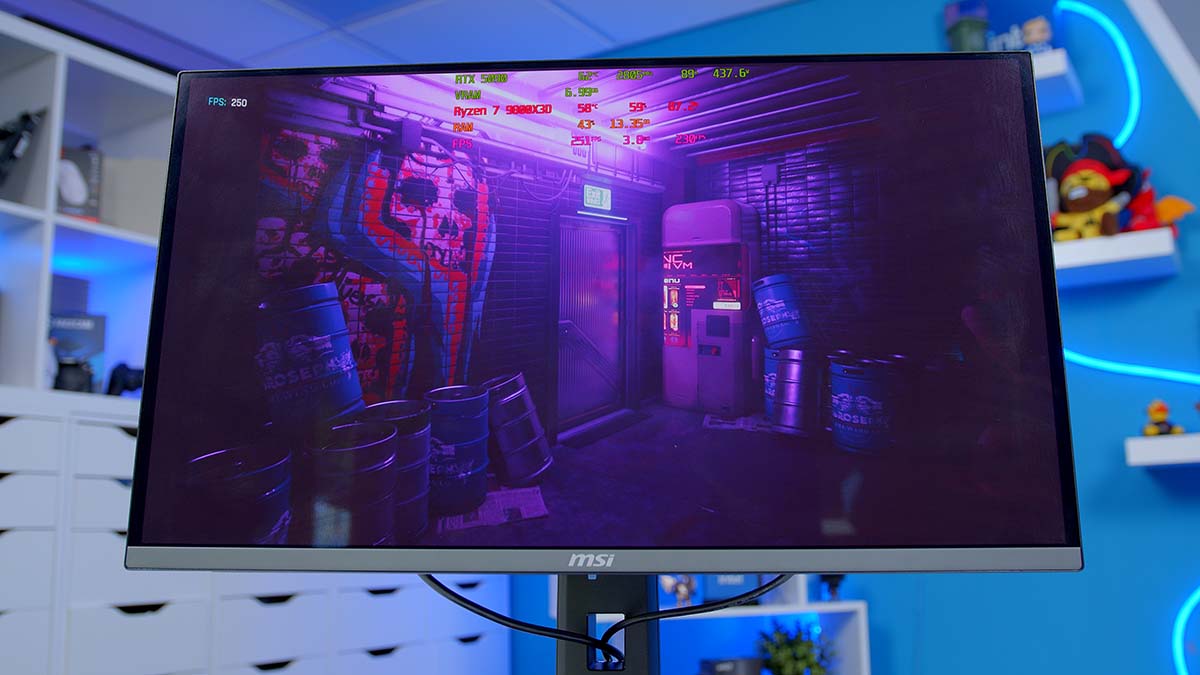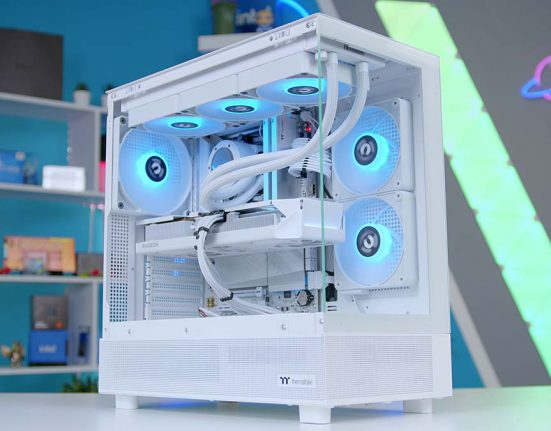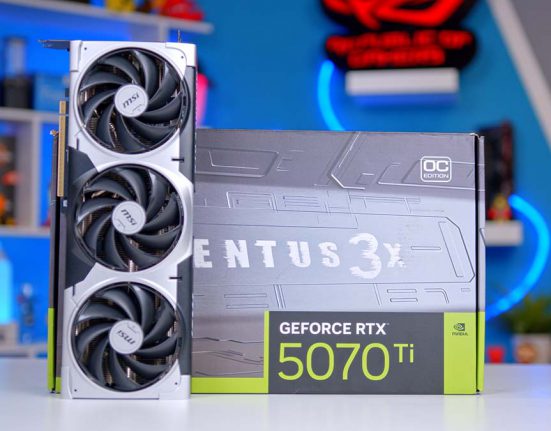The MSI MPG 271QRX QD-OLED is the slightly smaller sibling of the 321URX QD-OLED, offering gamers a crisp and vibrant panel geared towards high visual fidelity. This particular display is 27-inches and boasts a 1440p panel instead of the 4K display that the 321URX model provides. Equipped with a 360Hz refresh rate, DisplayHDR True Black 400, and OLED Care 2.0, this monitor is well-equipped for those looking to enjoy buttery smooth visuals.
The MPG 271QRX QD-OLED joins the existing lineup of QD-OLED monitors, which includes other competitive offerings like the MAG 312UP, the MAG 341CQP, and even the behemoth MAG 491CQP, a super-ultrawide. These monitors are incredibly popular as they’re some of the few QD-OLED displays that don’t come in at a highly exorbitant price point, which means the 271QRX QD-OLED has its work cut out.
However, to truly determine if the MPG 271QRX QD-OLED is worth buying, we need to perform a complete set of tests and benchmarks, and this is precisely what we’ve done in this review. We’ve put this display through the wringer, assessing its visual fidelity, colour accuracy, and smoothness. This review assesses the specs, design, features, and performance to determine if the MPG 271QRX QD-OLED offers a decent value proposition.
Buy the MSI MPG 271QRX QD-OLED on:
Specification
If we compare the MSI MPG 271QRX QD-OLED to its 32-inch sibling, these monitors are very similar on paper. The biggest separators between the two are the size, resolution, and refresh rate, which you could argue are the most essential elements of a display that affect the price. The first main spec worth covering is the size. This is a 27-inch monitor, which I prefer over a 32-inch display. The reason why the size is so important comes down to desk space and multi-monitor setups.
If you’ve got a reasonably small desk, a 27-inch display is likely the biggest you’ll fit without encumbering on critical keyboard and mouse space. Additionally, those looking to use two or even three monitors will be better positioned to do so with a 27-inch display. 32-inch monitors are pretty hefty, and as soon as we look at 34-inch monitors, we’re teetering into ultrawide territory. Either way, the size of this monitor is a plus if you want to minimise desk impact.
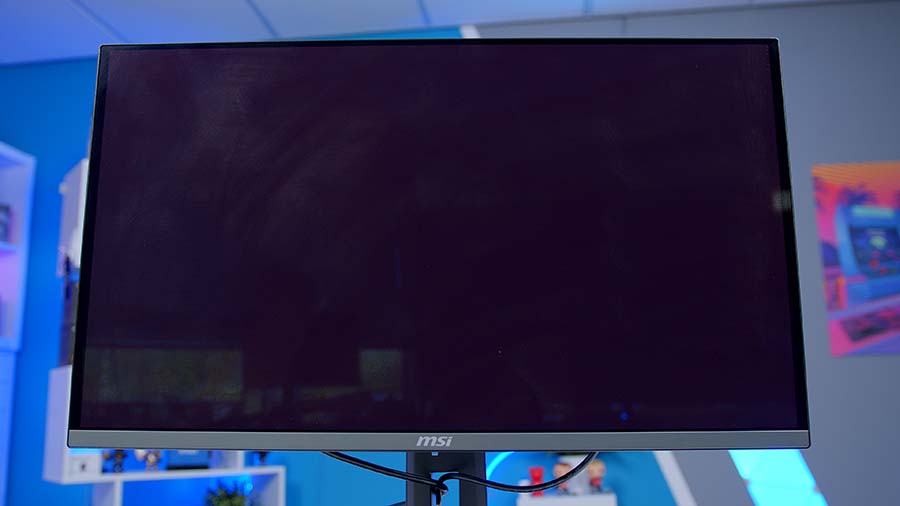
Regarding the resolution, this is a 1440p display, otherwise known as ‘Quad-HD’. 1440p is generally the go-to for most gamers as the pixel density is incredibly high, offering great visuals and vibrant colours. Furthermore, 1440p is much easier to run from a graphical standpoint. Most modern cards, including low-end options like the Intel ARC B570 and NVIDIA RTX 4060, can output high framerates at 1440p without much struggle, whereas 4K is generally more challenging. While I can’t imagine budget gamers will be picking up a monitor of this calibre, it’s good to know that it caters to a wide range of graphics cards.
| Key Specs | MSI MPG 271QRX QD-OLED |
|---|---|
| Screen Size | 27″ |
| Max Resolution | 2560 x 1440 |
| Refresh Rate | 360Hz |
| Response Time | 0.03ms GtG |
| Colour Gamut | 98% Adobe RGB 99% DCI-P3 100% sRGB |
| Peak Brightness | 1000 nits |
| Contrast Ratio | 1500000:1 |
| Panel Type | QD-OLED |
| Display Inputs | 2 x HDMI 2.1 1 x Displayport 1.4 1 x USB Type-C (DP Alt) |
| Additional IO | 2 x USB 2.0 Type-A Downstream 1 x USB 2.0 Type-B Upstream 1 x Earphone Jack |
| VRR Technology | AMD FreeSync Premium Pro |
The refresh rate is the last primary spec to touch on that’s different from the 321URX QD-OLED. This monitor can output a max refresh rate of 360Hz, compared to the 240Hz available on its 32-inch sibling. I don’t think the refresh rate matters on this particular display. The vast majority of graphics cards at 1440p can’t even reach 360Hz, which makes the higher refresh rate somewhat redundant. I don’t think this quality is entirely useless, and it’s great to see a modern monitor implement such a strong refresh rate, but at the same time, you’ll unlikely see framerates this high in most games.
Regarding the rest of the specs, the 271QRX QD-OLED and 321URX QD-OLED share incredibly similar hardware. Response time is 0.03ms GtG (grey-to-grey), and peak brightness is 1000 nits. Both displays share the same display inputs, USB ports, and the VRR technology they use: FreeSync Premium Pro. I’m not surprised that a lot of the hardware is the same because, ultimately, the 321URX QD-OLED is an excellent display, so it makes sense to implement the same hardware in a cheaper version that caters to those more restricted by a budget.
MSI MPG 271QRX QD-OLED Design
Moving onto the design, not much has changed compared to the 321URX QD-OLED. The 27-inch version shares similar design elements, so instead of highlighting all of the same pieces we did in our review of the 321URX, we’ll cover what we liked and didn’t like. First off is the frame. This range of monitors has a predominantly plastic body, including the outer frame, chassis, and stand. I’m in two minds about the frame. I like the plastic colouring and the minimalist approach to the aesthetic. MSI has gone for a much more toned-down approach to the look that doesn’t scream ‘I’m a gamer’, which I can appreciate, especially as it will fit in with an office-style setup.
On the other hand, the material used for the frame, which is plastic, makes the MPG 271QRX QD-OLED feel cheaper comparably. I can understand that MSI has likely done this to cut costs, but the plastic cheapens the look and feel.
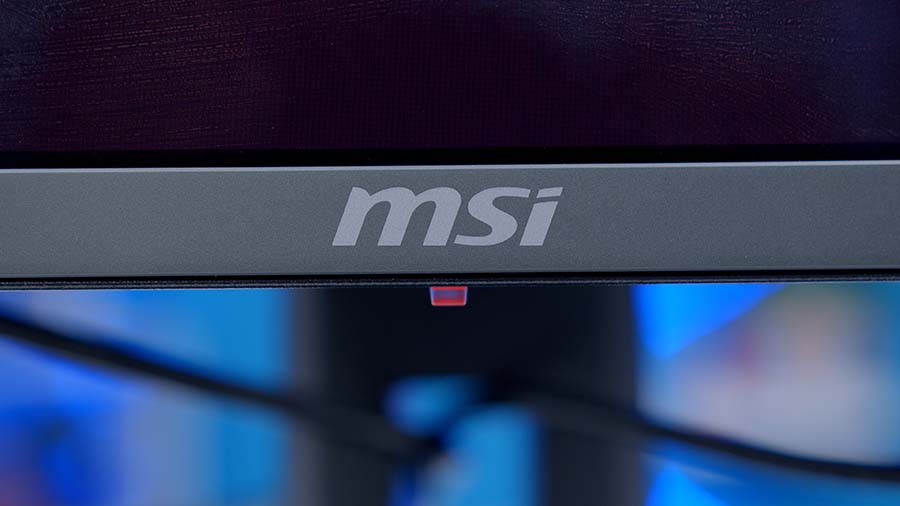
Moving to the back, the plastic is much more visible, and you can see the almost gritty texture on the panel’s rear. However, MSI has minimised the bulk of the monitor, restricting it primarily to the centre, where you’ll find some RGB lighting, the connector for the stand, and all of the monitor’s various inputs and outputs underneath. Again, I’m not a massive fan of the plastic, but I’m glad that the minimalist approach follows through on the other side. The monitor has a thin frame, which I’m appreciative of.
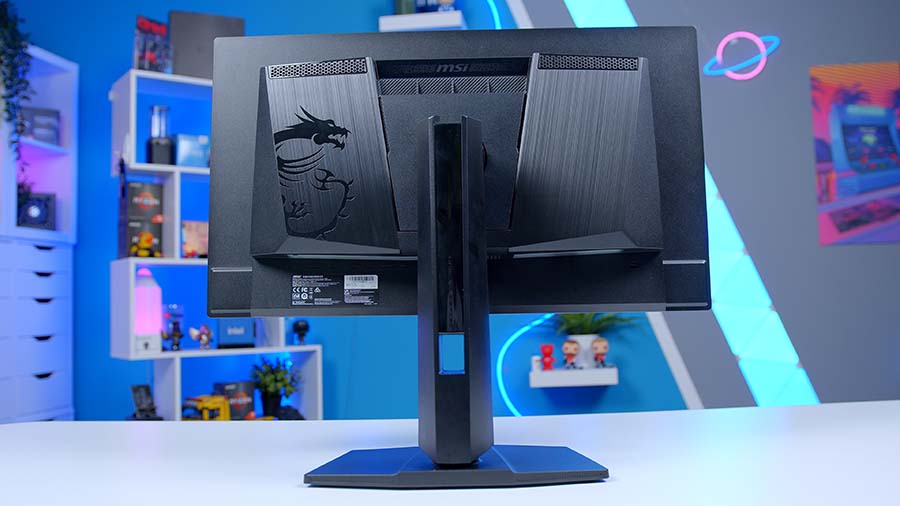
I feel the RGB strip located in the centre is a bit pointless. While some will appreciate it, unless you’re gaming in darkness all the time, you won’t likely be able to see the lighting because it’s located at the back. It’s a cool feature, but I think it could be better positioned.
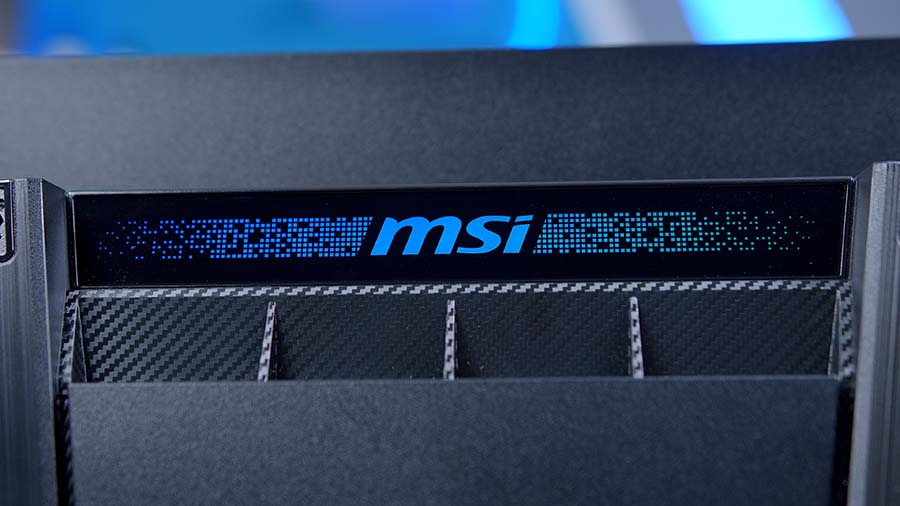
The stand for this monitor comes together very quickly. It’s split into two parts, the bottom foot and the central pillar, which connects to the rear of the display with a button mechanism. To connect them, you screw the pillar into the base with the captive screw. On a flat surface, push the pillar into the monitor’s rear, which will lock it in place.

I’m a big fan of the mechanism and simplicity of putting it together. A few monitors we’ve reviewed in the past have been finicky to put together, so it’s excellent to see a straightforward design. Additionally, I like that the base of the stand is relatively small. I don’t like the angled feet design that some other brands use as monitor stands because it simply takes up too much desk space, so it’s great that this monitor has a small footprint.
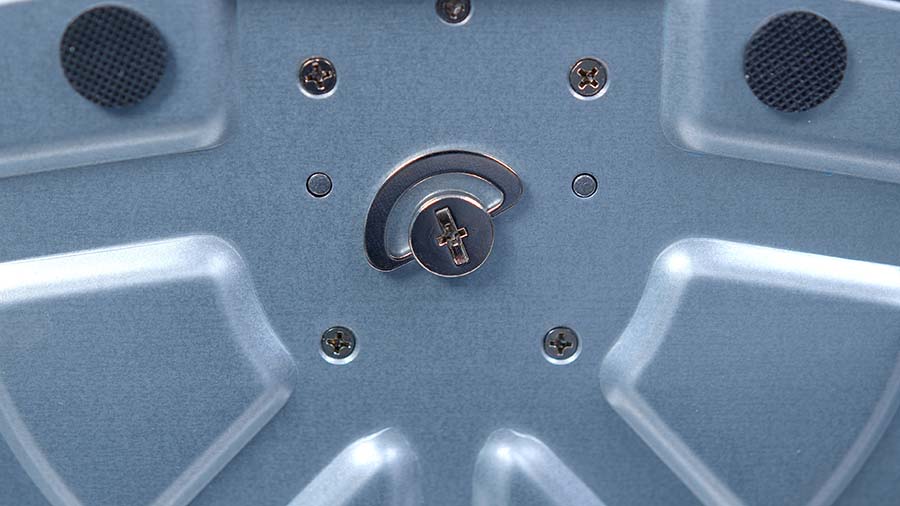
There’s not much else to cover regarding the design. As I’ve alluded, MSI has kept things simple with a minimalist aesthetic. This does impact the design slightly in that it feels and looks cheaper compared to other monitors we’ve reviewed in the past, but this likely comes down to cost-saving measures, which is fine if the monitor is more affordable as a result.
Features We Like
Vibrant Imagery
Despite this being a 1440p monitor, it offers exceptional and vibrant imagery across the board. The OLED and Quantum Dot technology significantly enhances what would be a reasonably simple 1440p panel. All the lighting is crisp, whites feel light but not piercing, and blacks feel dark and deep instead of just being devoid of light. Because this is a 27-inch monitor, pixel density is incredibly high, which means the screen door effect is negligible, allowing this monitor to provide a well-rounded, high-fidelity visual experience.
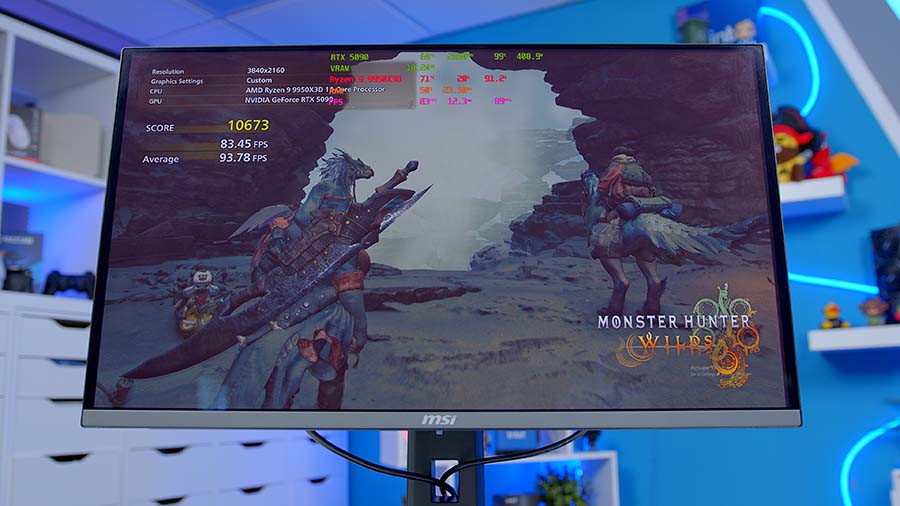
Three-Year Warranty
The MSI MPG 271QRX QD-OLED has a standard three-year warranty covering factors like burn-in or pixel death. While the OLED Care feature should minimise burn-in, it’s great to know that you can repair, return, or replace your display within three years if this occurs.
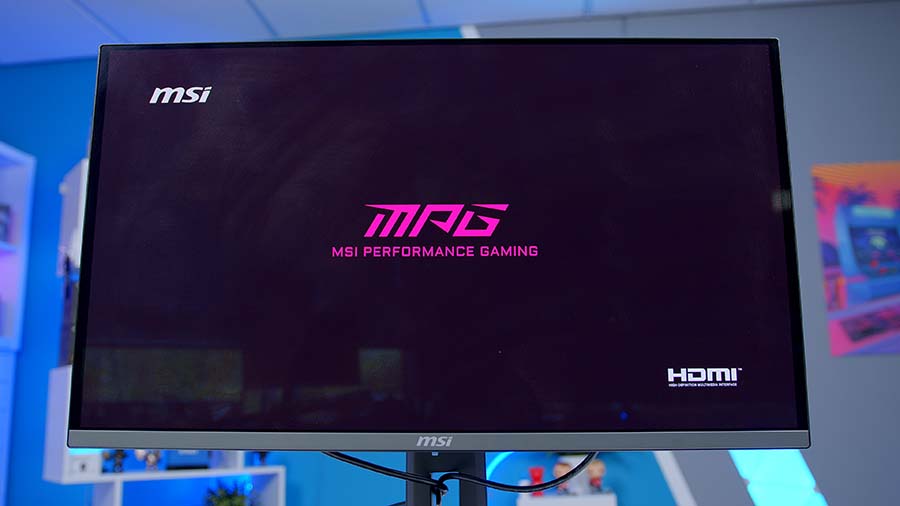
Features We Don’t Like
Uses Controversial AI Features
AI has recently become the big buzzword of the PC hardware industry, with almost every manufacturer providing some form of AI enhancement for their products. Unfortunately, MSI has jumped on board with offering AI ‘Gaming Enhancements’ with this particular display. The problem is that using these enhancements in online or competitive games could get you banned.
This was a big point of discussion when MSI announced their MEG 321URX QD-OLED display at CES in 2024, with many calling out MSI for creating hardware-based cheats. I don’t think the AI features that the MPG 271QRX QD-OLED display uses are bad, but know that you risk a potential ban in your favourite competitive titles when using AI ‘enhancements’.
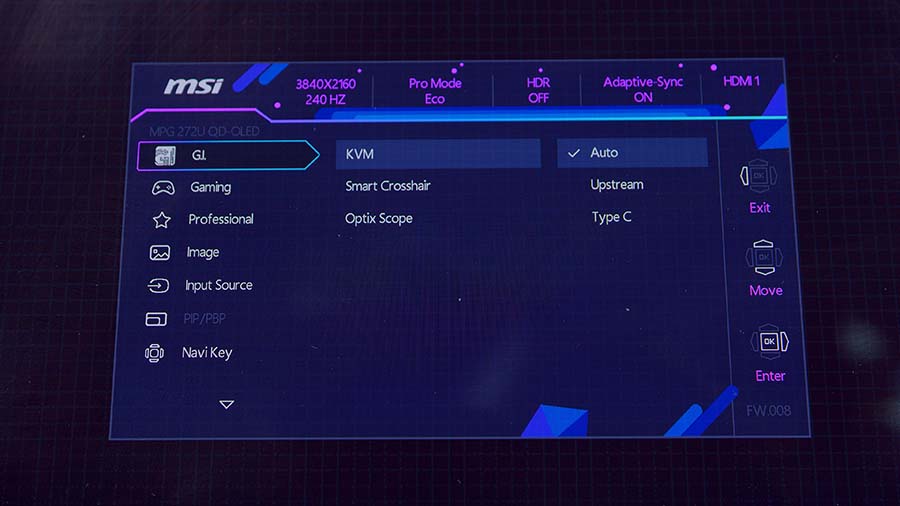
Rear RGB Is SomeWhat Pointless
We’ve briefly covered this in the design section, but the strip of RGB lighting on the rear of the panel is pretty pointless. It won’t be easily visible because it’s on the back of the monitor, especially in a well-lit room. This means you’ll need to plunge yourself into darkness, where the RGB might be distracting. I think it would have been better to move this around to the front or remove it entirely, further complementing MSI’s minimalist aesthetic.
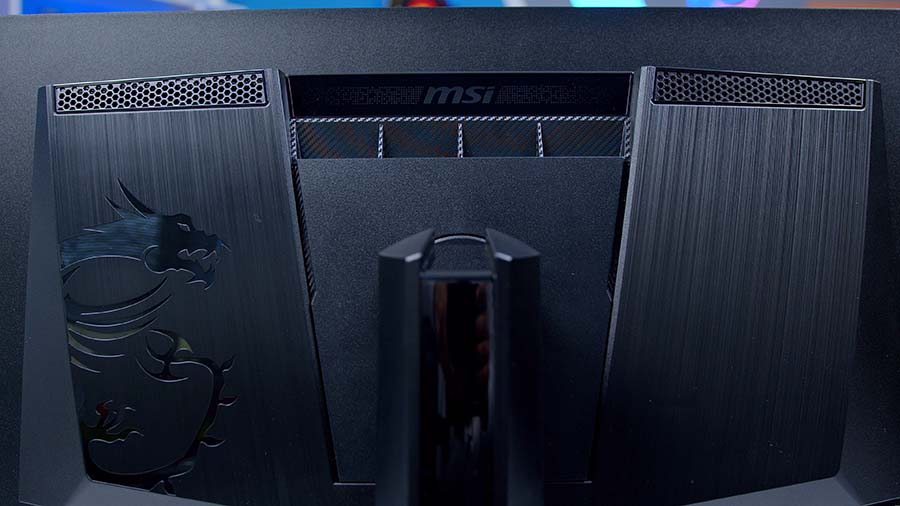
Colour Accuracy & Image Quality
Colour accuracy and image quality are the true tests of whether a monitor offers a solid visual experience. So, we’ve used our colour calibrator along with some gaming benchmarks to determine whether this display can keep up with other QD-OLED panels.
After firing up the DataColor Spyder X Pro calibrator, we ran through the wizard to calibrate the monitor and display colours accurately. We do this to see how the monitor handles a range of different colours and to see if MSI’s advertised colour gamut ratings are accurate. The graph shows that the MPG 271QRX QD-OLED is one of the most accurate displays we’ve tested on the DCI-P3 colour gamut.
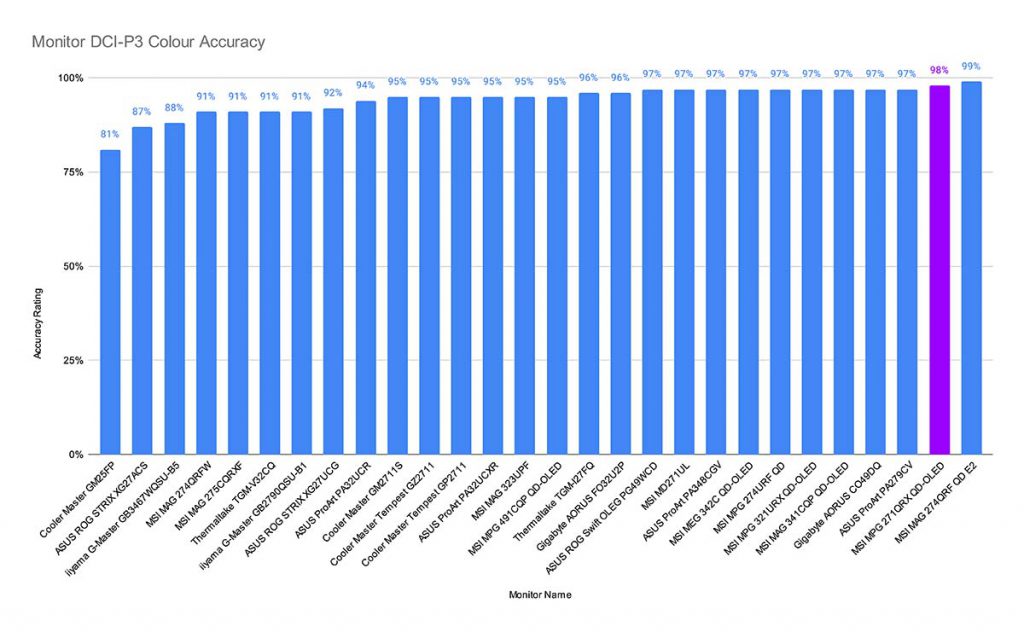
With a 98% rating, just 1% lower than what MSI advertises, the 271QRX QD-OLED is a highly accurate display. MSI’s OLED technology ensures that colours are vibrant or deepened when circumstances demand it, resulting in true-to-life representation. While our result is 1% lower, I think this is going to be fairly negligible, and we can ultimately put the disparity down to testing conditions.
In terms of the image quality, I was impressed during my gaming time on this display. The difference between OLED and standard LCD panels is astonishing, and I feel the vast majority of OLED owners will likely never go back to IPS or VA monitors. Despite being 1440p and not 4K, all of the imagery on screen feels and looks incredibly crisp and vibrant, and gaming in high-visual-fidelity titles was a dream.
Conclusion
MSI MPG 271QRX QD-OLED

Product Name: MPG 271QRX QD-OLED
Brand: MSI
Summary
The MSI MPG 271QRX QD-OLED is an exceptional monitor offering excellent visual fidelity and blazing-fast response times at an affordable price point. MSI has taken the ‘if it ain’t broke, don’t fix it’ approach to this display, as it shares similar features versus the 321URX QD-OLED. This 27-inch design caters to those with less desk space and focuses on providing excellent, high-quality imagery across the board. Additionally, with a three-year warranty, you can sigh with relief knowing you’re covered should anything go wrong.
My qualms with this display are pretty similar to what we said in our review of the 321URX QD-OLED, which are that the plastic design is somewhat lacklustre and the use of AI enhancements is a bit risky if you play many competitive games. The RGB is in a reasonably pointless spot. However, I feel these are all relatively small cons in the grand scheme of things when you factor in the price and excellent visuals, which are the main factors prospective buyers will consider.
Pros
✅ Exceptional visuals
✅ Small footprint
✅ Three-year warranty
Cons
❌ Plastic frame
❌ Controversial AI enhancements
❌ RGB is in a pointless spot


